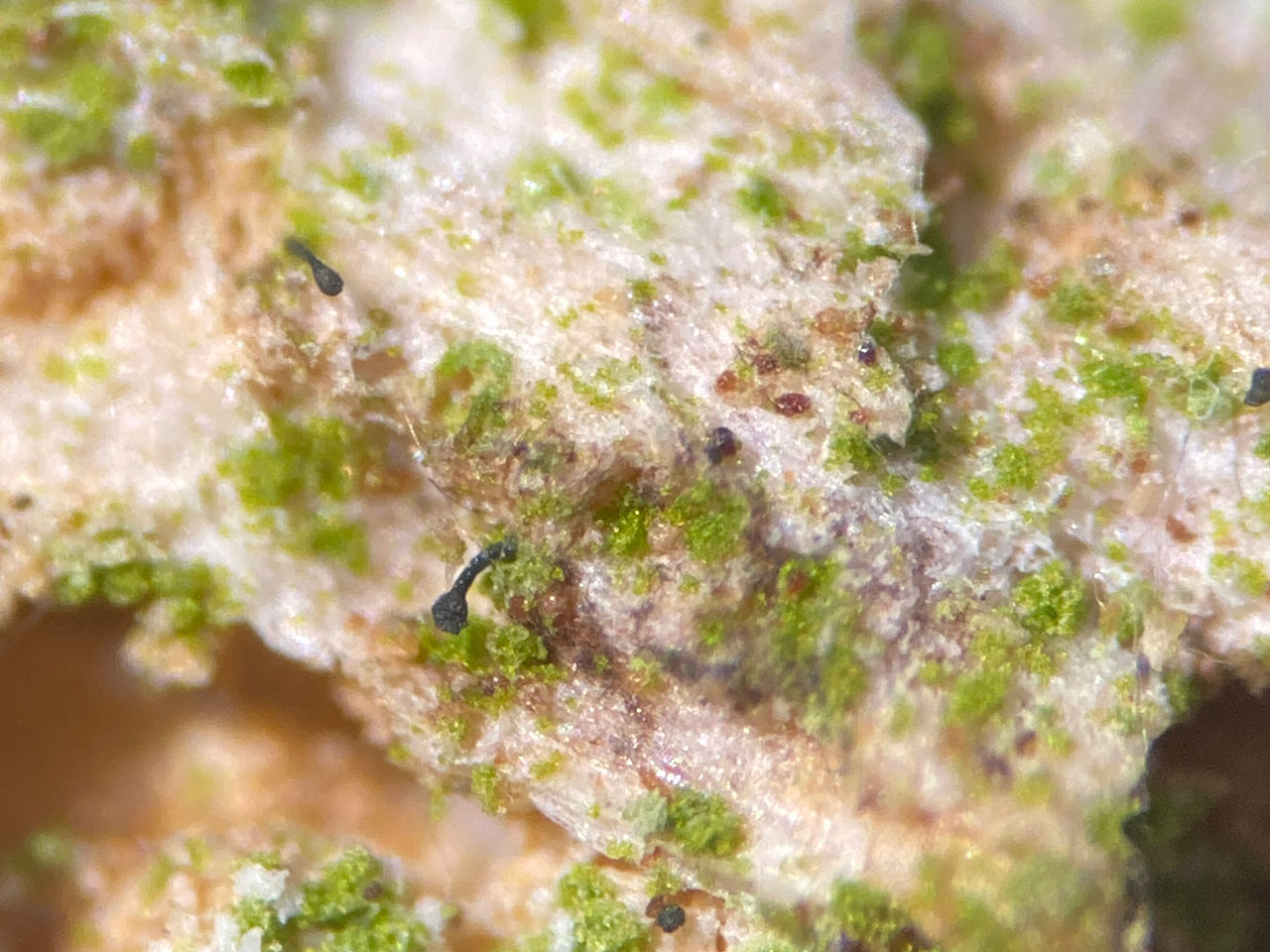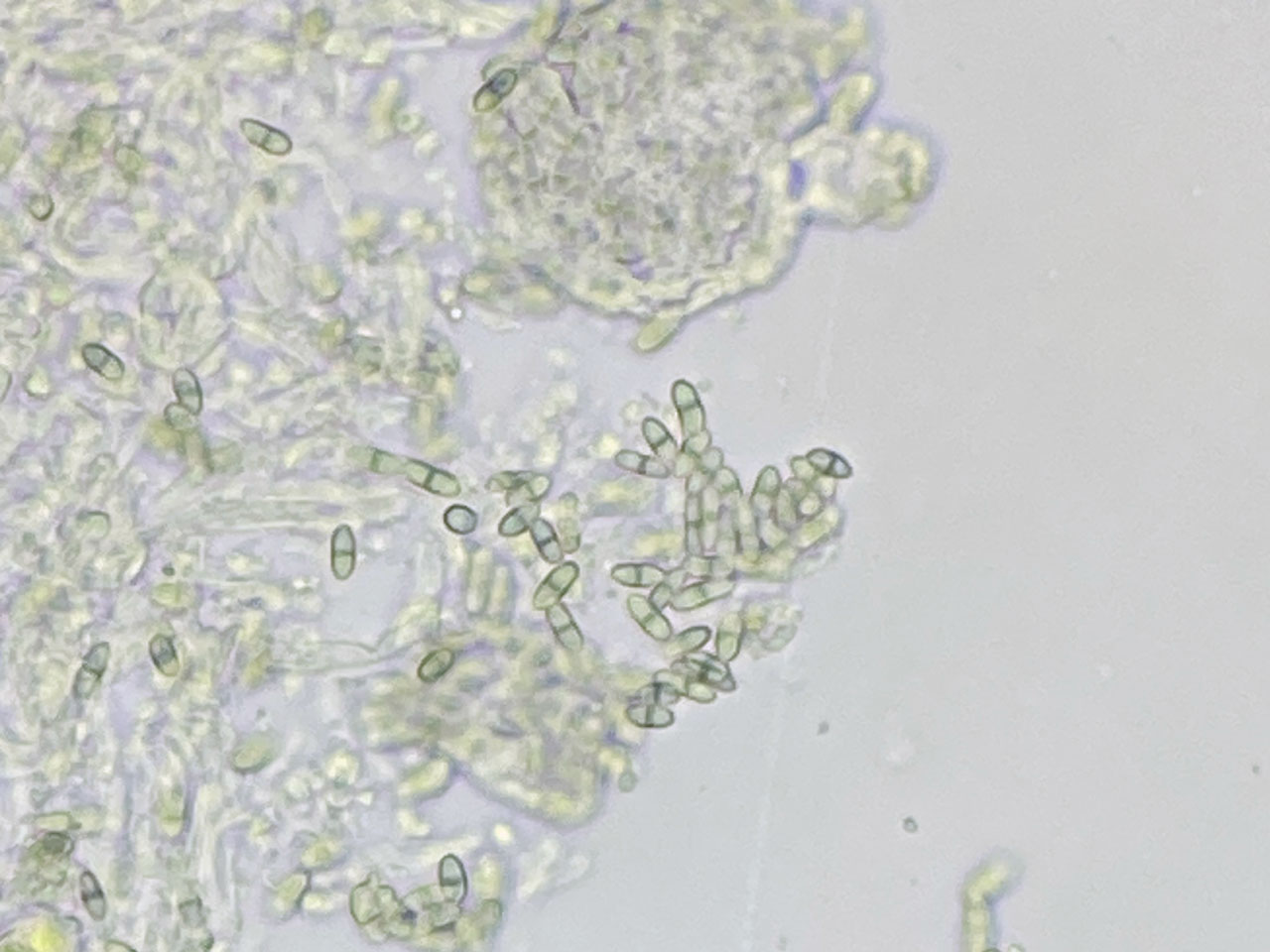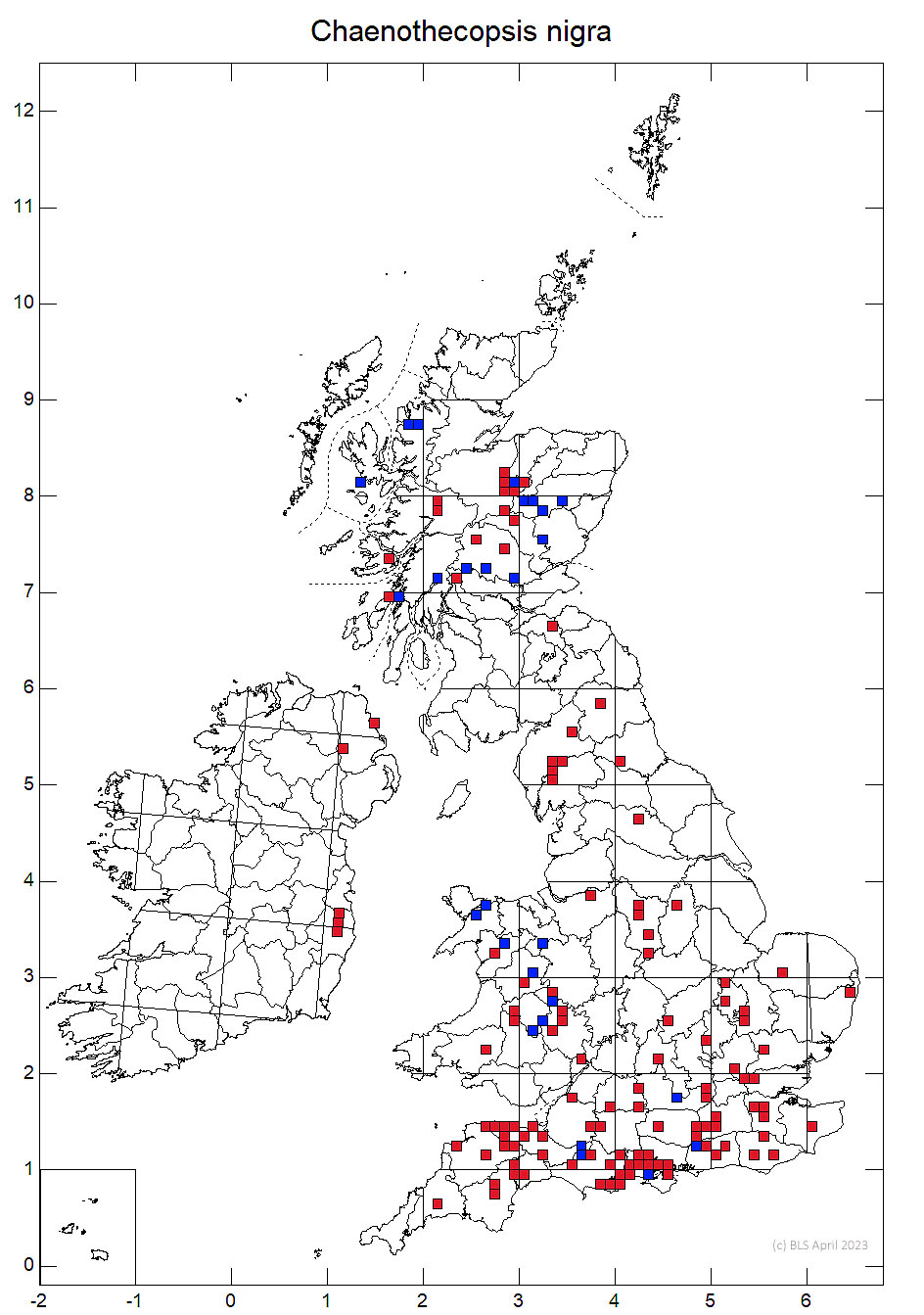Chaenothecopsis nigra
The most frequently found Chaenothecopsis species, widespread but local on standing or part fallen weathered lignum in sheltered conditions, usually in old growth pasture woodland or old parklands. Separated microscopically by the small pale grey-brown ascospores with more darkly pigmented septa and thinner walls.
Apothecia 0.7–1.1 mm tall, black; heads 0.18–0.30 mm diam., lenticular to hemispherical; stalk 0.04–0.08 mm diam., the outermost part dark brown, with periclinally arranged hyphae, stem hyphae not swelling in K; exciple poorly developed; epithecium and hymenium brown, K–, N–; hypothecium and stalk greenish brown to dark brown, K– or dulling, N–. Ascospores 5–6 × 1.5–2.0 µm, pale greyish brown, smooth, 1-septate, the septum markedly darker than the spore wall.
Easily distinguished by its small pale grey-brown ascospores with more darkly pigmented septa. C. tasmanica is similar but this has longer ascospores (6–7.5 µm) which are darker brown, with darked cell walls and the stalk has irregularly intertwined hyphae.
Usually on poorly lichenised or deteriorating algal crusts on lignum; local. Associated with Stichococcus, on wood of Pine, Alder, Birch, Hazel and Oak.

Throughout Britain (apparently rare in N. England), also N. and E. Ireland.
The most frequently found Chaenothecopsis species, widespread but local on standing or part fallen weathered lignum in sheltered conditions, usually in old growth pasture woodland or old parklands. Increasing shade in woodland is a potential threat.
Britain: Notable
Sanderson, A., Cannon, P., Coppins, B., & Simkin, J. (2025). Mycocaliciales: Sphinctrinaceae, including Chaenothecopsis, Mycocalicium, Phaeocalicium, Sphinctrina and Stenocybe. Revisions of British and Irish Lichens 52: 1–15.
Text by Neil A Sanderson based on Sanderson et al (2025)


